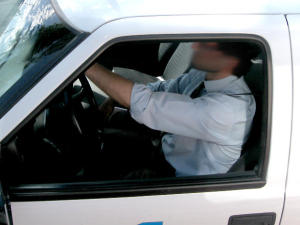Understanding the Psychology of Harrisburg Rear-End Crashes
Drivers routinely travel on roads throughout Harrisburg, Wilkes-Barre, Pottsville, York and Lancaster without becoming involved in an accident. This is because drivers make conscious and subconscious choices about how to behave behind the wheel based on their learned responses and their knowledge of traffic laws. Drivers make countless small decisions in every trip that help prevent crashes.
In some cases, however, a motorist is not able to avoid a collision. A rear-end accident lawyer knows that understanding why this happens is important to crash prevention. An article published by Visual Expert took a close look at the psychology behind rear-end crashes to shed more light on this issue.
A Close Look at Why Rear-End Crashes Occur
Understanding why rear-end accidents happen requires developing an understanding of how drivers choose to stop and why this sometimes doesn’t work.
Every time you are behind the wheel, you see cars in front of your vehicle. This means you aren’t going to stop every time a car is in your path. Instead, you judge the time-to-collision in order to determine if you need to stop or not.
Judging the time to collision occurs using optical image transformation. Specifically, your eyes and brain assess looming motion in order to help you to determine if you are about to hit the car in front of you and need to react. The amount of highway space between your car and the lead vehicle, which is called headway, is not actually a primary factor that you use to judge whether to stop or not because this is an imprecise measure.
Although looming motion is the key to identifying when you need to slam on the brakes, this visual cue only helps you determine the time to crash and it doesn’t tell you when you actually need to respond to the looming vehicle. The instantaneous time to collision is 1.5 seconds but often drivers travel with less than 1.5 seconds of following distance between their own car and the car in front because people tend to get close to each other in packs of traffic. drivers don’t expect the car in front to slam on the brakes, so may feel comfortable leaving this small amount of space between their car and a lead vehicle.
Looming motion is thus only one factor that drivers consider in deciding when to brake. Other factors include possible responses to the stimuli as well as vehicle capacity. Rear-end crashes can happen because drivers have imperfect information on these factors and, as a result, don’t have a learned response to what to do when their car is about to strike another one from the back.
A driver doesn’t know what his car is going to do if he slams on the brakes at 60 MPH when he’s about to hit another car, so drivers don’t really know what to do. They may not react quickly enough as a result, thus increasing the chance of a rear-end accident.
The absence of a learned response and the difficulty drivers have in responding effectively to the looming motion of a car in front helps to explain why rear-end crashes are so common. Each year in the United States, millions of rear-end accidents occur. When UNC conducted a review of car crash data from different states throughout the U.S., it was revealed that between 27.5 and 43.2 percent of all collisions on the road were rear-end accidents. This helps to explain why.
The experienced Pennsylvania accident lawyers at Metzger Wickersham have offices in Wilkes-Barre, Pottsville, York, Lancaster, Shippensburg and Harrisburg. Contact us at 1-800-WIN-WIN-1 (946-9461) for a free case evaluation.




